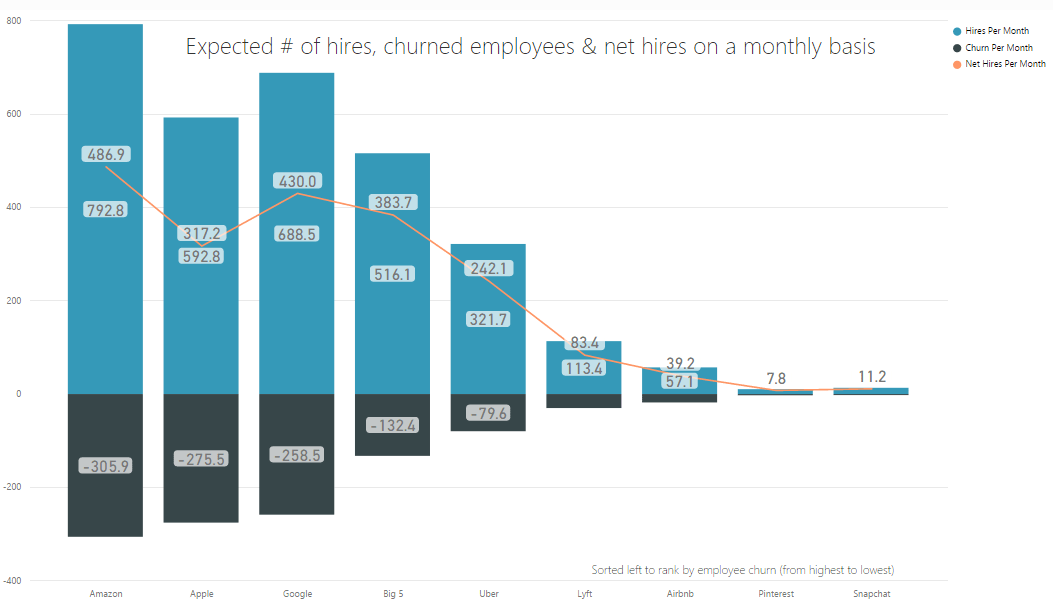I’ve received multiple requests to analyze employee churn and new hiring rates for big companies and unicorns with the approach I took earlier for studying engineering and sales retention rates. I figured I’d give it a shot – and combine all of the key metrics in one chart …
How to read this:
Blue bar represents the number of expected new hires that particular company will make in a 30 day (one month) period. Black bars (negative values) indicate how many employees will churn in a one month period. The orange line (the top most numerical labels correspond to the orange line plot) represent the net change in hires per month (new hires less churn). The companies are ranked by churn from left to right in descending order (so highest churn on the left).
As you can see in the chart, the big three companies included in this analysis are Amazon, Apple and Google. The unicorns are Uber, Lyft, Airbnb, Pinterest and Snapchat. “Big 5” combines these unicorns together as if they were one whole company. Also note, this is looking at employees worldwide with any job title.
Key Insights:
- Apple is not hiring enough new heads when compared with Amazon and Google. In fact, the Big 5 unicorns combined will hire more net heads than Apple with almost 50% less employee churn.
- Amazon’s churn is the highest – losing a little over 10 people a day. However, this is not bad relatively speaking – Google loses 8-9 people a day, and Apple is a tad over 9 a day (and Amazon has 36% more employees than Google). Given the recent press bashing Amazon’s culture and the periodic press envying Google’s great benefits, their retention rates tell a different a story – that it’s closer to a wash. Big tech companies with great talent churn people at pretty similar high rates regardless it seems (have some more thoughts on this but will save those for another post).
- At these current rates, all of the companies here (collectively) will increase their employee size by 20K (19, 414 to be precise) heads by year end (this is new hires less churn). That’s a measly 5% increase in their current collective employee size – and this is across the Big 3 Tech Companies and Big 5 Unicorns.
- Let’s compare Amazon to the Big 5 Unicorns. The Big 5 will hire 79% as many incremental heads as Amazon in a month, even though their collective employee size is 24% that of Amazon’s. Amazon has been in business for much longer (2-3x days since incorporation), and the Big 5’s churn is 43% of Amazon’s figure – both factors contributing to the closeness in the incremental head rate between the two.
Want more details?
How did I calculate these figures? Take a look at my previous post on engineering retention for more details. Same caveats listed there apply here, and then some (such as how this depends on the participation rates of LinkedIn which may differ considerably internationally compared to the US market which my previous posts exclusively focused on). Feel free to connect or email me if you have any questions or feedback.
